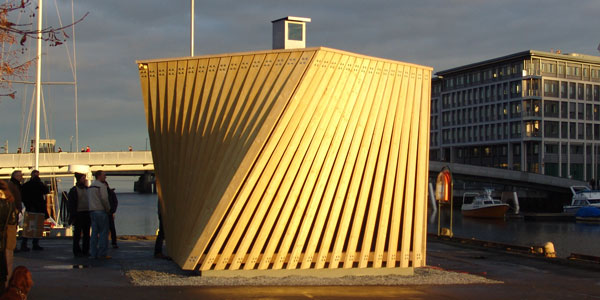"Some Assembly Required: Contemporary Prefabricated Houses"
Walker Art Center - 2006
Walker Art Center - 2006
 As stated in the previous blog, the purpose of this exercise is to examine an exhibit space and analyze the successes and failures of the exhibit and eventually apply what is learned the the exhibit the arch 402 studio is going to construct at the Indiana Museum of Art. The exhibit space I am examining is the "Some Assembly Required" exhibit that was located at the Walker Art Center in Minneapolis, Minnesota. As talked about in the previous blog many different techniques were used to display and exhibit the material. One of the most effective means of display was the full scale exhibit.
As stated in the previous blog, the purpose of this exercise is to examine an exhibit space and analyze the successes and failures of the exhibit and eventually apply what is learned the the exhibit the arch 402 studio is going to construct at the Indiana Museum of Art. The exhibit space I am examining is the "Some Assembly Required" exhibit that was located at the Walker Art Center in Minneapolis, Minnesota. As talked about in the previous blog many different techniques were used to display and exhibit the material. One of the most effective means of display was the full scale exhibit. A single room was built and installed into the gallery space at the Walker. The room displayed many of the interior and exterior materials and was able to be walked through and around. They allowed the viewer to experience the atmosphere and materiality of prefabricated houses first hand. The installation showed everything from wood panels to glass panels to operable windows. The idea of not only showing the information through scale models and 2-d images but with full scale mock ups is a very interesting and can make a huge impression on the overall exhibit.
A single room was built and installed into the gallery space at the Walker. The room displayed many of the interior and exterior materials and was able to be walked through and around. They allowed the viewer to experience the atmosphere and materiality of prefabricated houses first hand. The installation showed everything from wood panels to glass panels to operable windows. The idea of not only showing the information through scale models and 2-d images but with full scale mock ups is a very interesting and can make a huge impression on the overall exhibit.


